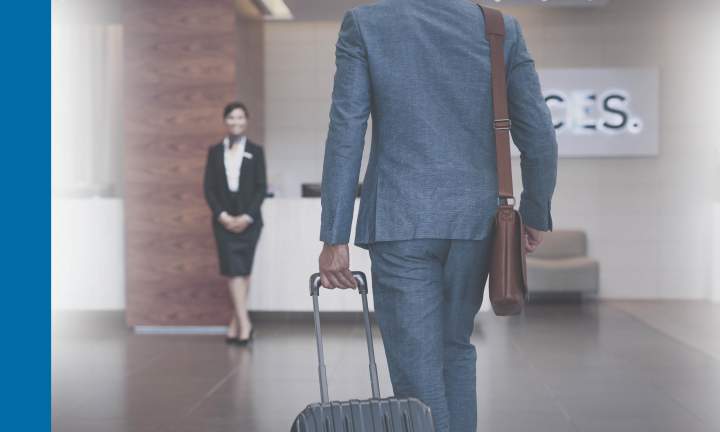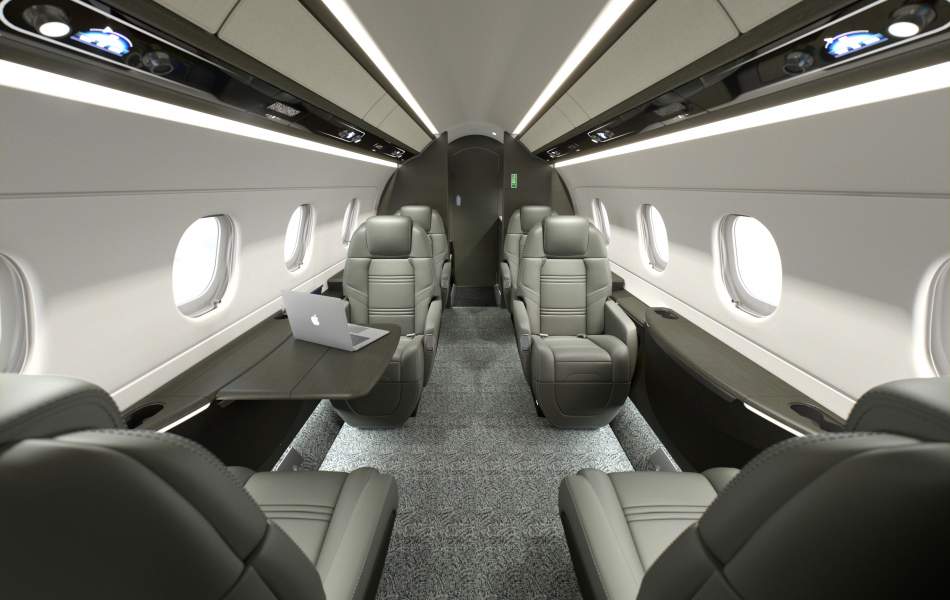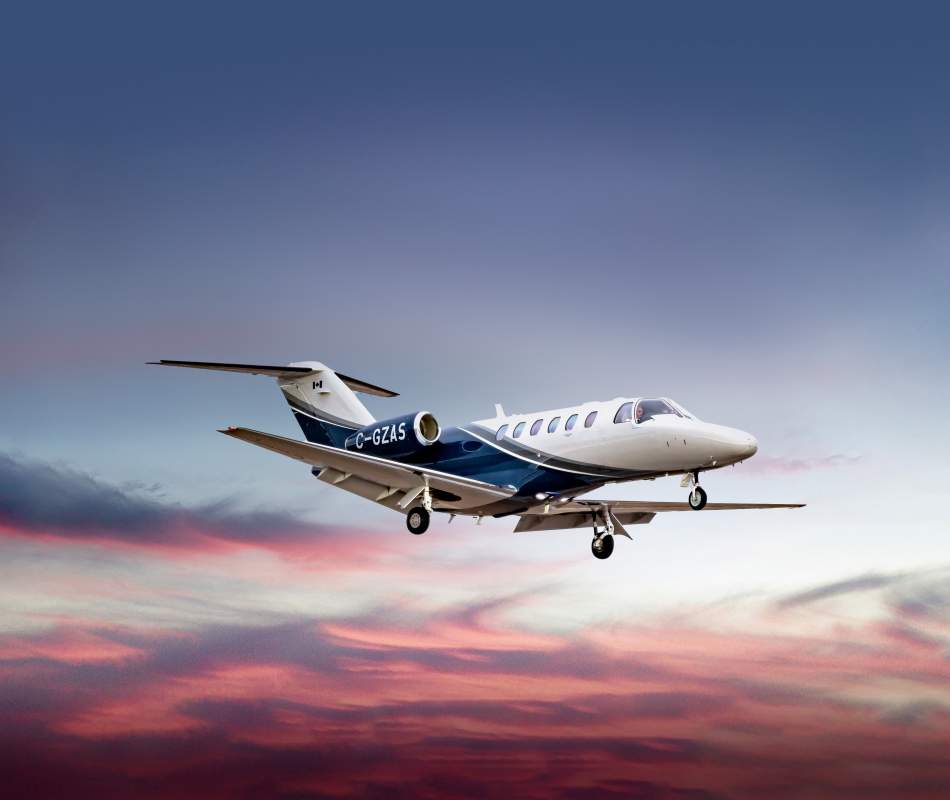Tired of airline-related hassles and delays? Take back your valuable time with private aviation.
Research reveals that modern companies choose their mode of travel based on what they need to accomplish. In many cases, private aviation is the best fit. Not only can an entire team travel to a remote location, but they can do so at their convenience and on their own schedule. The flexibility, efficiency and reliability of private aviation is highly prized by those who use it.
Discover how Fractional Jet Ownership enables our Fractional Owners to get more done in fewer hours, conserving those precious and finite resources of time and energy.

Maximize Your Time And Energy Through Private Aviation
“About half (47%) of a CEO’s work was done at company headquarters. The rest was conducted while visiting other company locations, meeting external constituencies, commuting, travelling, and at home.”
- Harvard Business Review, “How CEOs Manage Time,” July-August 2018
Executive Summary
Time well spent.
It’s a common phrase, but the definition of “time well spent” is different for everyone.
It could mean getting home from work earlier so you have more free time with your family. It could mean getting extra work done while you travel. Or, it could mean arriving refreshed and ready for business meetings, instead of tired and frazzled after surviving the commercial airline experience.
For business leaders, time is especially finite. With multiple competing priorities, it often seems impossible to give everyone the attention they need. Meanwhile, carving out any precious “free time” seems out of the question.
A 2018 article in the Harvard Business Review sums it up well:
“CEOs, of course, have a great deal of help and resources at their disposal. However, they, more than anyone else in the organization, confront an acute scarcity of one resource. That resource is time. There is never enough time to do everything that a CEO is responsible for. Despite this, CEOs remain accountable for all the work of their organizations.”
In addition to running short on time, leaders who aren’t successful at balancing their own personal needs with those of the business can easily find themselves running out of another precious commodity: energy.
It’s a fact that time and energy are two important ingredients for success in business.
It’s also a fact that time and energy are both depleted when travelling on commercial airlines. Especially in today’s post-pandemic world, booking an airline ticket means paying not just the fare, but paying with your time and energy, too.
Here, we connect with three real-life AirSprint Fractional Owners who share how Fractional Jet Ownership enables them to get more done in less time, conserving those precious and finite resources of time and energy.
The Business Case For Business Aviation
Almost everyone has experienced the hassles of airline travel at one point or another. From arriving hours ahead of your flight to lost baggage and boisterous fellow passengers, commercial travel often equates to lost time and increased aggravation.
There is a better way: private aviation.
Unlike the airlines, many people have never travelled on a private aircraft and have questions about what is involved.
From a business perspective, flying private offers a host of measurable benefits. These include significant time savings; a schedule tailored to your needs; the ability to fly into smaller airports that may be closer to your destination; the option to add more than one stop; and a private “office in the air,” so that flight time can be productive time.
But don’t take our word for it.
Here are the stories of three AirSprint Fractional Owners, all of whom purchased private jet time though the company’s Fractional Ownership Program.
Read on to find out why they first investigated private aviation, what prompted them to book their first flight, and why they ultimately chose AirSprint to take their business to a new level.

The Hospitality Industry CEO
READ CASE STUDY
The Real Estate Executive
READ CASE STUDY
The Automotive Industry Executive
READ CASE STUDYCase Study #1: The Hospitality Industry CEO
In 2019, a Western Canadian hotel chain purchased a remote property that needed extensive renovations.
“We had to visit frequently and it was far away,” recalled the CEO of the privately-owned company. “We needed a plane.”
The company had previously owned an aircraft, and the CEO, believing it was better to own, set out to research the possibilities. He was focused on the cost per hour; and believing he had found the right aircraft, he even issued a letter of intent to purchase.
“Then, going through our operating budget, I realized I’d have to spend three times as much money to buy it as I’d have to spend to buy fractions in three planes – the operating budget was the same! I’d have to charter my aircraft out for several hundred hours to recoup my costs. It seemed to be a no-brainer to take the fractional route,” he said.
The company purchased fractional shares of all three aircraft in the AirSprint fleet: the Embraer Praetor 500, Cessna Citation CJ3+ and Cessna Citation CJ2+.
“For us, we have lots of missions that are an hour to 90 minutes, but some are over three hours,” said the CEO. “So, that was an attractive thing for us. I pick my plane based on my mission.”
Generally, aircraft carry about eight staff members to various properties in the hotel chain, including those in Alaska and Kananaskis in the Alberta Rockies. Usage is in the neighbourhood of 75 hours per year.
“We flew a planeful of staff, our training team, from Kananaskis to Alaska. To do that commercially, those people would have flown for 20 hours, eight or nine of them, and the time commitment would have been crazy.”
That flexibility is the reason why the company made the investment in private aviation. As a growing business, the aircraft enables the company to pursue new opportunities and acquisitions in geographical areas that previously wouldn’t have been considered.
“When you can hop on a plane for a day and bring your key lieutenants with you, you realize it’s possible,” said the CEO. “Balance and family is a big part of the equation. To give myself and our staff time back with their families is important. If they’d otherwise have to leave on a Saturday to go to Alaska, that’s a lot different than leaving Monday morning. Everyone views it as a perk. It makes things possible that wouldn’t normally be possible.”
He also said flight time is productive time, with team meetings taking place during flights.
“There’s no doubt about it: Walking onto a private aircraft is a treat and it makes you feel motivated and driven to succeed.”
While this CEO still flies commercial when it makes sense to do so, there are other times when a private leg is the only way to make a connection work.
“I’m pretty involved with my kids. We’re working on a project in Denver, and I can stay and have all these meetings and still make it home in time for a choir recital, a hockey tournament, etc. For me, I wouldn’t do things if I had to sacrifice time with my kids. Having the plane aligns with my personal values to spend as much time as possible with my family.”
“I wouldn’t be able to do what I’m doing if I didn’t have it.”
On a recent trip, the hospitality executive said he visited several locations in Southern California. The entire itinerary took just a couple of days versus perhaps twice as much when flying commercial. He pointed out that private aircraft can access smaller airports closer to his ultimate destination, which translates into more efficient travel.
“I would say that for businesses that are growing or have multiple locations, it’s pretty hard to replace a jet. It has a dramatic effect on burnout. Every time I fly commercially, I hate it.”
As for time and energy, there’s no question in his mind that flying with AirSprint conserves both.
“It’s expensive, but as soon as your time is worth more than the plane, you should be flying on the plane,” he said. “If you make a million dollars a year, that’s about $500 an hour. When you rationalize how many hours you waste in commercial travel, the value becomes apparent. Then add in the value of staff time.”
Travellers are at the whim of commercial schedules, he pointed out, and it can be difficult to maintain personal time or important routines, such as exercise.
“I think of private aviation as efficiency – it’s so much better to do things with a fresh, clear mind. Days feel less gruelling. Over time, it’s better for work/life balance, and that value compounds.”
“I think it’s a very valid expense, although you have to be at a certain place. But for us, it’s money well spent.”
Case Study #2: The Real Estate Executive
In the last 10 to 15 years, the Western Canadian real estate market has expanded dramatically.
For one businessman who deals in the full spectrum of real estate activities – including development, strata and property management, land acquisition, constructing buildings and leasing them out, and purchasing other corporations – his interests range far and wide.
In September of 2020, he became an AirSprint Fractional Owner, purchasing a fractional share in a Cessna Citation CJ2+.
“I had been thinking about it for two years or so, but it really didn’t seem that practical,” he recalled. “But then COVID came in. I had a bunch of flights booked and paid for with the airlines, and everything got cancelled. Airline service became extremely limited.”
His businesses were exempt from shutdown and their activities actually began to increase as the pandemic dragged on.
“My need for travel increased by 30 per cent rather than declined. My controller had been researching the private aviation market for a while. We liked a number of things about AirSprint. It fit well for our needs.”
Currently flying about 37 hours per year, the executive said the jet saves him a lot of driving time.
“A lot of it is the value of time,” he reflected. “Most of my travel is within Western Canada. The big issue is that one of my main offices is in a location that, if I were to drive, it’s 14 hours to Vancouver. Sometimes the mountain passes are closed due to snow. There are airlines available, but schedules are limited.”
Despite the pandemic, flying with AirSprint enabled his business to continue. He was able to get to appointments in Vancouver, “carrying on as if nothing had changed.”
Today, this executive travels using a mix of both commercial airlines and private jets. Airline connections are still problematic, he said, so he’ll often take the jet to a major hub airport and fly commercial from there.
Prior to AirSprint, he would occasionally charter an aircraft, but soon realized that he had to pay for the aircraft to return to its destination after dropping him off.
“With AirSprint, the way the system is set up, you’re paying for a one-way trip and not paying for the repositioning. Also, when flying private, it’s productive time for me. I’m not waiting in line for the boarding pass, waiting in line to get through security, waiting for baggage, etc. The whole timeframe is much, much shorter thanks to the convenience. I can make a phone call and within 24 hours, sometimes less, I’ve had an aircraft to get on and go where I want to go. The convenience factor is astronomical.”
While he can’t put an hourly value on his time, convenience and time savings are the major attractions to flying with AirSprint, he added.
“I’m an entrepreneur and the biggest value for me is convenience. How do you put a value on that? I’m not an hourly paid worker where I can put a per-hour cost on my time. The economics of it would probably work well for many people; I’ve even found that in the personal use category. I’ve had family members with newborn children that have needed some medical procedures in a larger city. The convenience of transporting them by aircraft instead of a car is huge.”
In addition, there are still cases where face-to-face meetings trump Zoom or Teams every time.
“Where we’re looking at an acquisition, having a face-to-face meeting onsite with the principals gives you a better feel for the situation,” said the real estate executive.
“There is absolutely a business case for private aviation, but it depends on the business. How critical is it that you get to where you want to be? Businesses are more successful when they can accommodate schedules for their colleagues and clients.”
“The people that use private aircraft are usually the people who are very proficient and successful in business.”
Case Study #3: The Automotive Industry Executive
With automotive dealerships in the Greater Toronto Area and Québec City, this executive’s company focuses on new and pre-owned vehicle sales, maintenance, parts and auto detailing services.
When the pandemic started, this company, too, had to find a way to carry on business.
“Everything seemed to change on a daily basis,” recalled the president of the auto group. “We needed to figure out a way to get to Québec City and back for business in an efficient manner. We needed flexibility with time and access, with the ability to change arrangements. Commercial aviation used to fit the bill, but it was becoming increasingly more difficult.”
The company discovered AirSprint and purchased a fractional share of a Cessna Citation CJ2+, the aircraft that best fit its mission requirements.
Looking back, that was one of the most critical decisions it made during the pandemic.
“In fact, things did get worse in terms of logistics,” said the president. “Commercial aviation stopped going directly to Québec City. I would have had to fly to Montréal and connect to another flight from there, which at certain times took longer than driving. That doesn’t even include the time it takes to plan, book, deal with cancellations, reschedule, get to the airport early, check in, wait for boarding, and adapt your work schedule to the commercial aviation schedule.”
For this executive, AirSprint took one worry off his plate.
“When you had daily emergencies in business during the pandemic, this was one thing I didn’t need to deal with.”
Even today, the company still flies 70 to 75 hours per year, mostly between the GTA and Québec City.
The president doesn’t foresee a time when he’ll give up his private jet.
“Even now, it still makes sense,” he said. “For a flight to Québec City, getting there three hours before is ridiculous, and there’s no guarantee the flight won’t be cancelled. The total time value ends up being huge. Obviously, it’s not the flight time alone, but all the logistics. Travelling commercial is a lost day. That’s time we’ll never get back.”
Plus, in a customer-facing business, the jet enables that personal connection.
“There are few of us who can do remote work,” reflected the president. “As soon as the face-to-face became more possible as regulations relaxed, we noticed a big difference in actually being at the work site and capturing things you can’t see on the screen. Most definitely, I don’t need any convincing about the value of face-to-face.”
He is convinced of the benefits of private aviation, and said he wouldn’t go back to travelling exclusively by commercial airline.
“The situation at the airports has not improved. If anything, commercial aviation is worse right now. Flying private is an opportunity that most definitely gives us an edge, if you will. I can’t see how we would have carried on, otherwise.”
“I think it’s a fantastic opportunity for many businesses who need to move executives in a short period of time and have the maximum flexibility that is required in this uncertain world we live in.”
Like many other companies, this one thoroughly researched private travel options before choosing AirSprint.
“I wasn’t sure that Canada had anything like an AirSprint, and I was also pleasantly surprised at how good their customer service is,” concluded the president. “Whether it’s by email or phone call, from the pilots to the team that books the flights, they are very good. They follow up diligently and they take care of everything.”
“I knew that private flying was better, but that level of service was a nice bonus. Being in the customer service industry myself, I am super impressed.”

Get More Done In Less Time
“Travel is an absolute must. You can’t run a domestic company, let alone a global one, from headquarters alone. As a CEO, you have to be out and about.”
- Harvard Business Review, “How CEOs Manage Time,” July-August 2018
Conclusion
Despite technology’s gains, the personal connection is still important in today’s business world. Whether it’s customer meetings, deal negotiations or team visits, business executives must travel.
According to the Harvard Business Review: “Travel is an absolute must. You can’t run a domestic company, let alone a global one, from headquarters alone. As a CEO, you have to be out and about.”
As commercial airlines struggle to right themselves amidst additional waves of COVID-19, private aviation has stepped in to fill the gaps in business travel.
A 2018 general aviation survey entitled “The Real World of Business Aviation” yielded some interesting facts:
- Business aircraft often visit airports with infrequent or no airline service;
- Flexible scheduling is a key driver when it comes to booking private aircraft;
- Business trips often incorporate multiple destinations;
- Companies use both private aviation and the airlines as determined by individual requirements; and,
- Passengers on business aircraft spend nearly two-thirds of their time on board engaged in work.
Research reveals that modern companies choose their mode of travel based on what they need to accomplish. In many cases, private aviation is the best fit. Not only can an entire team travel to a remote location, but they can do so at their convenience and on their own schedule. The flexibility, efficiency and reliability of private aviation is highly prized by those who use it.
Furthermore, flying private allows busy executives—such as the AirSprint Fractional Owners quoted in this paper—to maximize their most finite resources: time and energy.

What would you pay to reclaim your time and conserve your energy for the things that matter most?
- Time to get more done at work, in fewer hours.
- Time to make memories with family and friends.
- Time to play.
- Time to live your best life.
Are you ready to learn more?
© 2022 AirSprint Inc. All rights reserved. This paper was produced for AirSprint by Mustang Media Writing & Editorial Services
